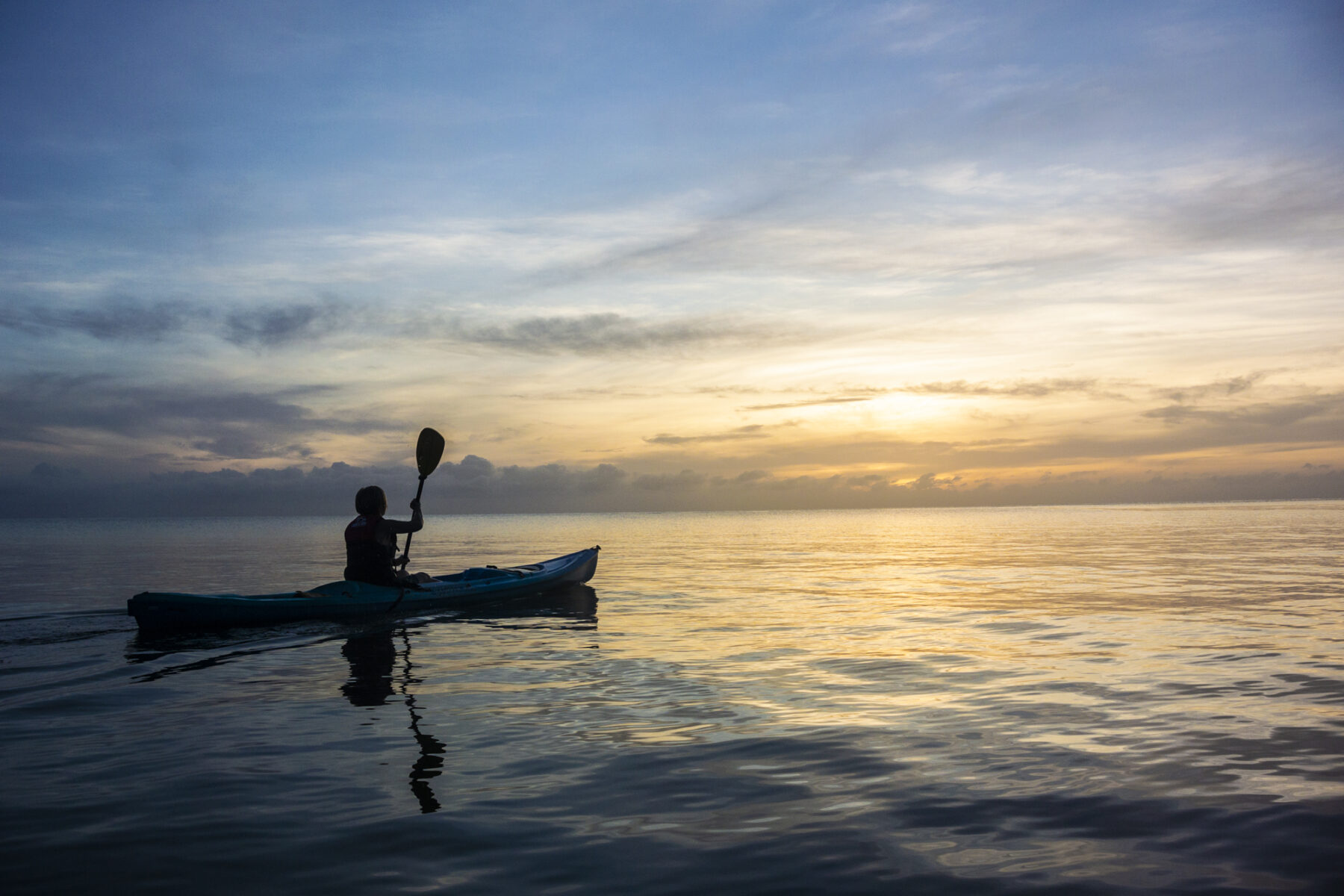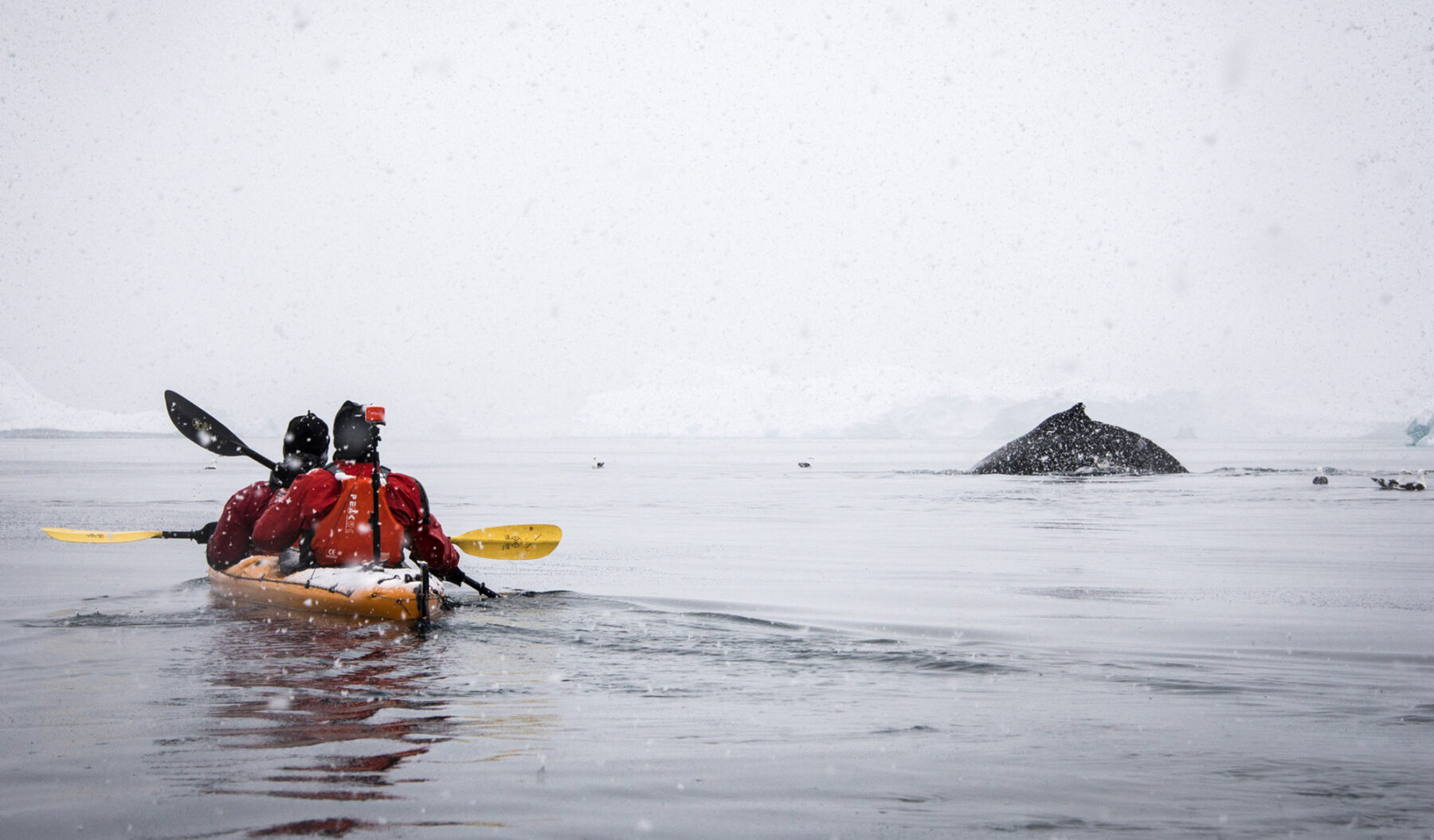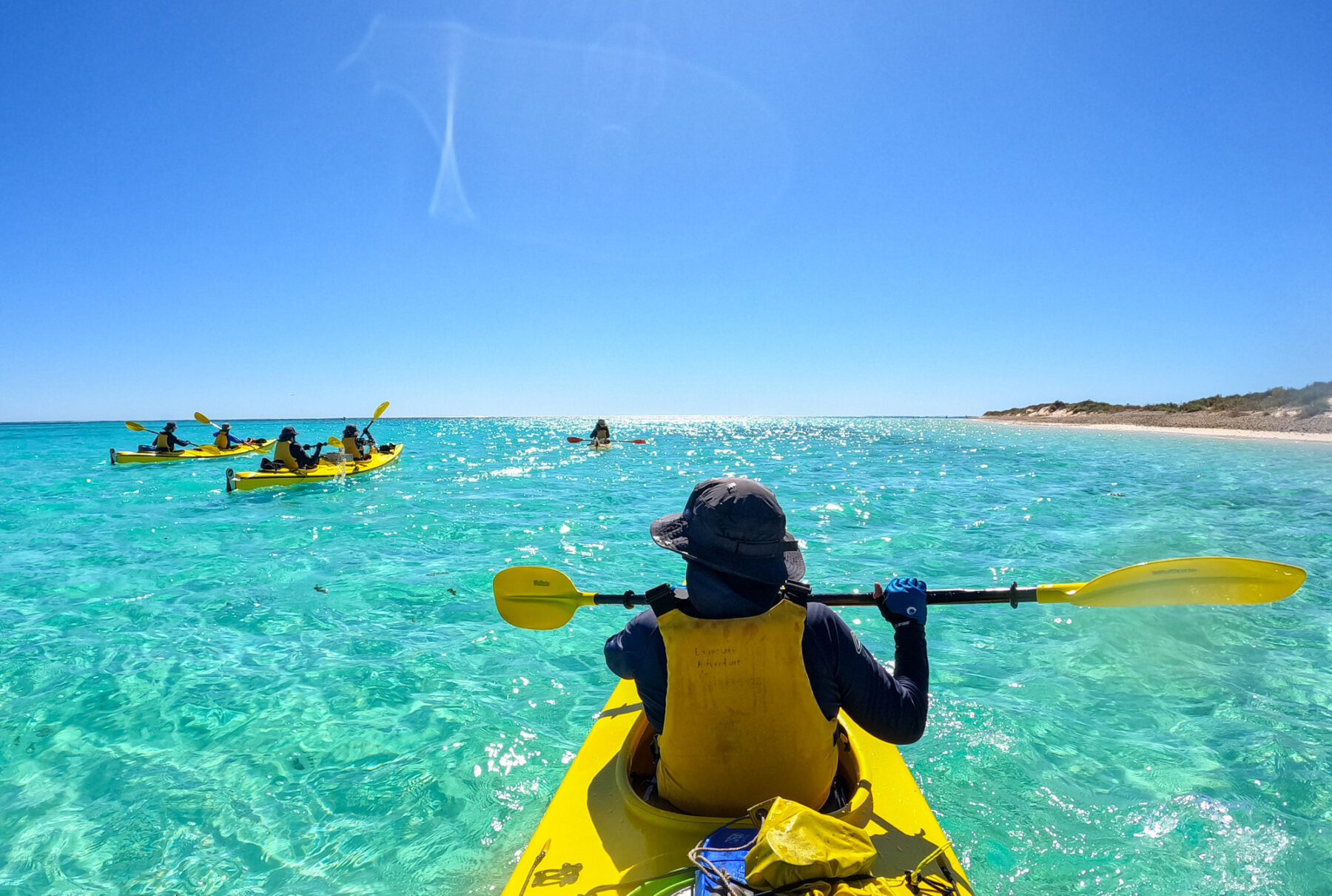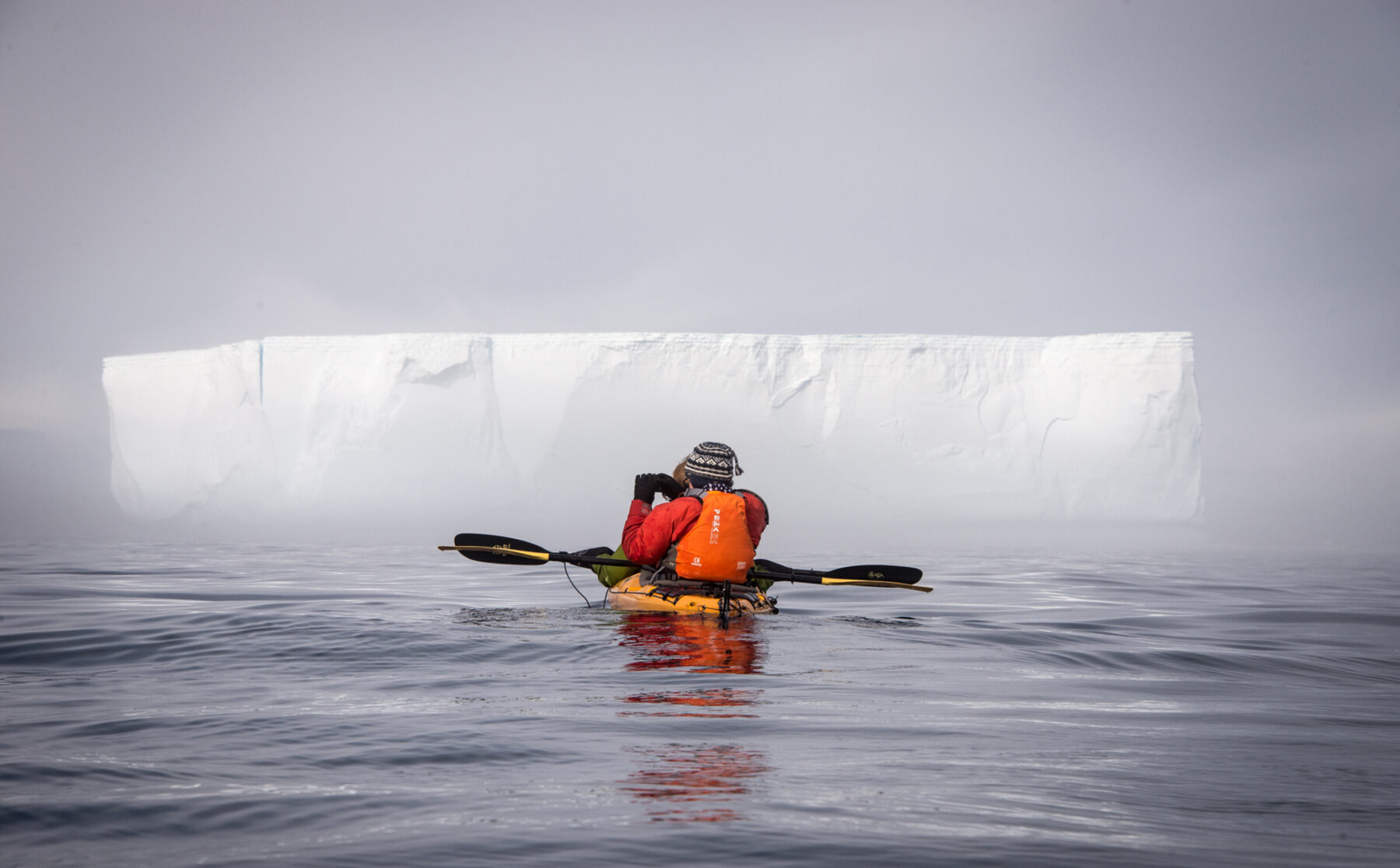Paddle Pulse: Master the art of kayak photography

Sea kayaking gets you up close and personal with nature, offering extraordinary sights and scenes from a unique perspective. However, kayak photography is tricky; capturing these moments whilst in the elements and from the seat of a kayak can be challenging.
With years of experience photographing stunning moments on Southern Sea Ventures trips – from the Arctic to Fiji and southern Tasmania – I’ve collected an arsenal of tips. These can help ensure that you seize that shot worthy of mounting on your wall, commemorating your adventure for years to come.
1. Safety first
Protect your gear from the elements with a quality dry bag or hard case. But remember, your safety and the safety of others come before any shot. Even when focused on capturing the perfect moment, always keep your navigation and communication tools within arm’s reach.
2. Read the light
The soft, warm light of ‘the golden hour’ at dawn and dusk creates idyllic images. Overcast days enrich colours, and a clear blue sky offers a contrasting canvas for landscapes or wildlife.

3. Keep it steady
A sturdy kayak is key when photographing. A monopod attached to your kayak can stabilise larger cameras. If you’re shooting on the go, a faster shutter speed will prevent blur. In rough seas, anticipate some post-production work, including cropping and straightening to perfect your shot.

4. Stay composed
Use the rule of thirds when composing your shots for a more balanced, intriguing result. To do this, imagine your image divided into nine equal segments by two vertical and two horizontal lines – on some cameras you can even set up the viewscreen to add these lines for you.
5. Play with perspective
Kayaking offers unique vantage points. While paddling around Bruny Island, for instance, we often see towering sea cliffs from a unique low-water viewpoint, allowing us to capture their majesty dwarfing the kayaks beneath. Incorporate foreground elements like your kayak’s bow for added depth and context.

6. Tell a story
At its heart, photography is storytelling. Use your camera to capture the essence of your journey beyond the scenery: this could be candid shots of your paddling partner, or remembering to pull out your camera during challenging weather or more adventurous moments!
7. Poles apart
Photographing in the polar regions presents its own unique photography challenges and opportunities. This topic alone could fill an entire post. Key pointers include: adjust your exposure to compensate for all the bright, white surfaces to avoid under-exposing your images; extreme cold can drain batteries and impair camera function – pack a spare battery and keep it warm by storing it close to your body. Insulated camera cases or thermal wraps can also help shield your gear from the cold. Finally, if you’re lucky enough to spot the northern or southern lights, you’ll need a steady surface and a long slow exposure.

8. Going troppo
At the other extreme of kayak photography is the tropics. Here, the golden hour in the early morning and late afternoon is more valuable than ever, helping capture the vibrant colours and lush scenery, and avoiding the harsh midday sun which can wash out images. Protect your gear from heat and humidity – keep silica gel packs in your camera bag to help reduce moisture. Also, give your gear time to adjust to sudden changes in temperature and humidity – such as moving from an air-conditioned room to the outdoors – to prevent lens fogging.
9. Wildlife watching
Opportunities to spot wildlife is one of the best parts of kayaking. When it comes to capturing these moments, patience is key. Take time to observe their behaviours and anticipate actions. While bulky, a telephoto lens is a great option for capturing details from a distance. Remember to respect wildlife and always maintain a safe and ethical distance. Paddling quietly and steadily will increase your chances of getting closer, responsibly.

10. The power of post-processing
Even the best photos can benefit from some fine-tuning. Adjusting brightness, contrast and colour saturation can enhance your images, but moderation is key – ideally, you want to use these tools to bring the image closer to what you experienced on the day. Create copies and don’t save over your originals, then you can play around and have fun!
11. Picking your gear
Salt water and cameras aren’t best friends. While I’ve trusted my Nikon D610 for stellar shots, even with its basic weather sealing, time has taken its toll. If you’re hesitant about risking high-end equipment, a phone or an Olympus Tough serve well and slips right into a PFD pocket. And remember, even waterproof cameras might not float, so always attach a strap!

Quick tip: Keep a small towel within reach – it cuts down on the salt you transfer to your gear. For those pieces of equipment that can handle it, a rinse after exposure to salt water is wise.
For dynamic shots, especially underwater, GoPros are fantastic. Their extender poles offer elevated angles, letting you be creative without the risky move of standing up in your kayak.
12. The final word on kayak photography
Remember, the magic of kayak photography is all about observing patiently, savouring the moment, and then seizing a slice of it to share with others. With patience, practice and a keen eye, you can immortalise the beauty of your paddling adventures.
Toby Story is Senior Guide and Director at Southern Sea Ventures, which offers guided kayaking adventures across the world, including a photography tuition package on their Svalbard and Antarctic expedition cruises.
For more kayak advice, see Paddle Pulse 1 and Paddle Pulse 2.




